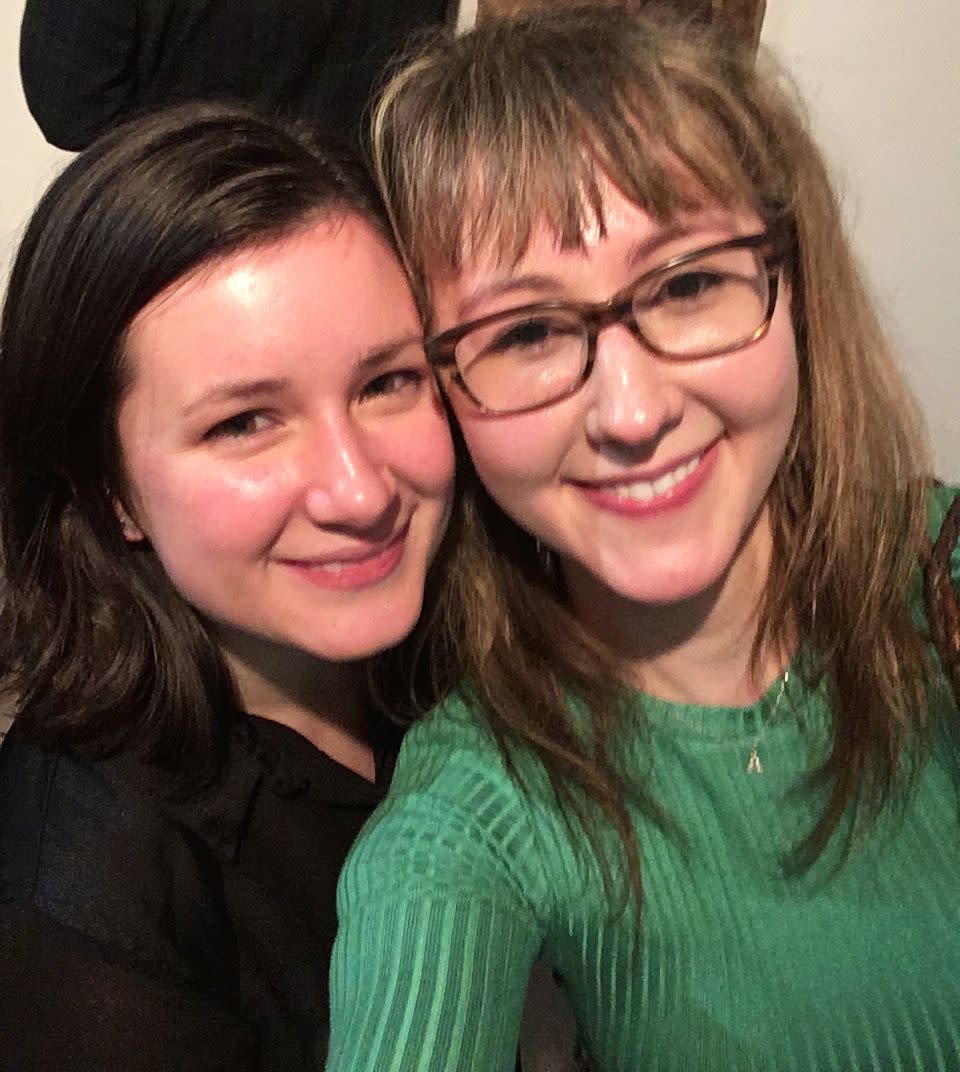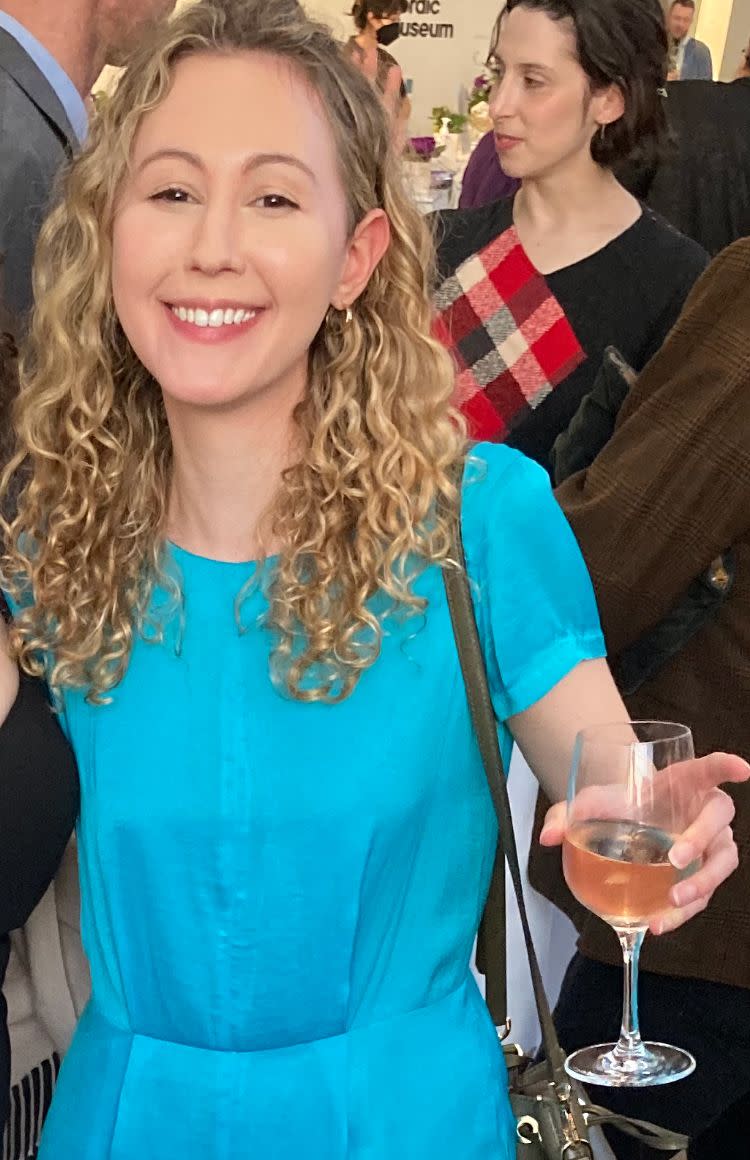Why Did I Spend 15 Years Pretending I Had Straight Hair?

It was an early August evening, and I was on the ferry to Montauk, away from the pounding humidity of New York City and toward the beach house of a man I’d just started seeing. I should have been savoring the anticipation of a romantic weekend away. Instead, I was crouching over a plug socket, avoiding eye contact with my unruffled fellow passengers, waiting for my hair straighteners to heat up. As soon as the metal plates were warm, I rushed them into the bathroom and ran them over my rapidly expanding hair. But my efforts were in vain—I felt my hair re-inflating the moment I left the stall. The shore was approaching, and my anxiety grew along with the frizz atop my head. Would my new beau regret his invitation if he saw my natural curls? That trip–spent reading alone on a beach towel, protecting my tenuously smooth hair while my host cooled off in the sea–marked what I now consider my rock bottom. It would be another two years before I would forgo my straightening routine. In the meantime, I bought a pair of portable, battery-powered mini flat irons.
Some teenage girls dream about growing bigger breasts or getting their braces off; I fantasized about the invention of a drug that turned curly hair straight. Flat irons were the next best thing. I was 13 the first time I pressed my curls between two hot plates and watched them magically transform into the silky locks I’d always wanted. In trying to recreate that high over the next 15 years, I would scald my forehead, inhale $300 keratin fumes, plan my social life around my blow-dry schedule, and skip showers and workouts that might compromise my handiwork. Each potential yoga class or jog around the park involved a calculation: would the endorphins be worth redoing my hair? The occasional Brazilian blowout provided temporary relief, but the effects never lasted as long as my hairstylist promised. I hated how the odor—reminiscent of rotten pickles—clung to my hair for days.
I grew up in the ’90s when eyebrows were sparse, “body positivity” was a punchline, and hair was straight. Rachel Green, Charlotte York, Marissa Cooper—all of my TV heroines had the same sleek hair. The Princess Diaries came out in 2001, and I watched, inspired, as Anne Hathaway transformed from awkward schoolgirl to swan-like heir to the Genovian throne—thanks, largely, to the magic of a blowout. “You have thick hair—like a wolf,” says the bitchy stylist on royal retainer. Then, he breaks a hairbrush in one of her tangles and snaps her glasses in two.
I parsed Millionaire Matchmaker—a trashy reality TV show about women pursuing wealthy men—eager for clues into the mysterious world of romance. I memorized host Patti Stanger’s straightforward advice: let him call you first, don’t mention exes (a breeze for a 13-year-old yet to land a date), and straighten your hair. Men, Stanger explained, liked hair that they could run their fingers through. All of these lessons were reinforced by the summers I spent in Japan, where my dad sometimes worked and where I was the only curly-haired child for miles. Many nights, I would stand in front of the hotel mirror and pull at the ends of my hair, pretending I had the same dark, silky locks as the fashionable women I saw on the Tokyo Metro. As I entered my mid-twenties, my curly hair was my best-kept secret, known only to my family and a few remaining childhood friends.

In March 2020, when the pandemic hit, I scrolled through my old Raya matches and picked one—Jeremy—to meet over Zoom. Alone in my one-bedroom apartment in Brooklyn, I gave myself a break, straightening only the front sections of my hair for our video calls. But I resumed the full, laborious routine for our first in-person date in April. After all, we’d “met” under the pretense that I had straight hair, and I kept it up when we moved in together in May. However, there were a few close calls: our first weekend away to a beach town where, luckily, it was too cold to swim and early-summer mornings when I would wake to find my hair crimped with sweat and sneak off to straighten it while he slept.
You might think that all this work made my hair look good. It did not. After almost a decade of abuse, my hair was so damaged and the ends were so frayed that I would sometimes spend 45 minutes in front of the mirror with my blow dryer and flat irons, only to then tie it up in a sad, limp ponytail.
About a month or two into our relationship, I took Jeremy home to meet my parents. With quarantine restrictions just starting to lift, our four-person dinner felt like a party. I was thrilled to see my new boyfriend bonding easily with my family. After a final nightcap, I relaxed on the sofa, drowsy and content, while Jeremy perused the photos on the mantel. When I’d met his brother, I had happily submitted to a presentation of old yearbook photos for insight into who he’d been in the lifetime before we met. Now, presumably, he was doing the same. And then, from the fireplace, Jeremy asked a question that broke my reverie: “What happened to your curly hair?”
I followed his gaze. In between framed photos of my brother graduating from college and me at ballet with hair slicked back in a bun was the incontrovertible evidence: me, aged four or five, with shiny red sandals, a floral-print dress, and corkscrew curls exploding out of my head, like a scruffy Shirley Temple. How could I have forgotten to put it away?
“Hmm,” I said, stalling. “I’m…not sure.” Sensing my reluctance, he let it go. But I started to wonder: who was I doing this for? Most days, Jeremy was the only person I saw. Besides, it was becoming difficult to keep this up. I hadn’t given my hair a day off in months, and Jeremy wondered why I spent so much time in the bathroom. By then, we were living together and planning an international move, but I didn’t know how to reveal this secret, or whether he would feel betrayed when I finally did.
And so I started following natural hair influencers online. I ordered a product called “Miracle Curl,” and hoped it lived up to its name. Then, one day, about four months into our relationship, I got out of the shower with wet hair. I combed in a dollop of my new curl cream, sat down next to Jeremy at the kitchen table, and opened my laptop, keeping with our co-working routine. I felt my hair begin to dry. I watched Jeremy type and waited for him to look up. I scrunched the ends of my hair, as I’d seen in a TikTok tutorial, and braced myself. I tapped at the keyboard, pretending to write.
“Do you have curly hair?”
I looked up from my computer and searched his face. He looked shocked. Did I also detect disappointment? Loss of attraction? Was it all over?
“Why didn’t you tell me?”
I had no answer.
And then he grinned. He swore I’d never looked better. I didn’t quite believe him. But I wanted to see myself the way he did—and I decided to try.
Liberated from my blow-drying regimen, I had hours of newfound free time. I started exercising more and discovered the joy of running and rinsing off without reworking my social calendar. My hair began to recover from years of heat damage. As quarantine let up and I reunited with friends, I relished their surprise at seeing my natural hair for the first time.

Unrelated to my hair, my relationship with Jeremy ended along with COVID-19, and I redownloaded the dating apps. In some ways, meeting someone was harder than ever; I was older, with more baggage, but scheduling, at least, was simpler. I no longer had to arrange my plans around blowout appointments or the weather forecast.
It was raining the night I walked to a nondescript pub to meet a Hinge match named Oscar. My hair was huge, but I didn’t panic; I had nothing to hide.
Oscar and I spent the next 10 days together. I broke all of Stanger’s rules. I talked about exes. I texted him when we were apart. I let him see me makeup-free and messy-haired. And now we’re engaged. He’s only seen my straightened hair in old photos. He says I look like a different person now. I feel like one, too. Less anxious, more free.
You Might Also Like


